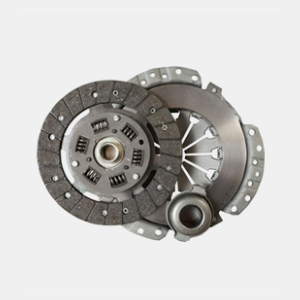-
 Afrikaans
Afrikaans -
 Albanian
Albanian -
 Amharic
Amharic -
 Arabic
Arabic -
 Armenian
Armenian -
 Azerbaijani
Azerbaijani -
 Basque
Basque -
 Belarusian
Belarusian -
 Bengali
Bengali -
 Bosnian
Bosnian -
 Bulgarian
Bulgarian -
 Catalan
Catalan -
 Cebuano
Cebuano -
 China
China -
 Corsican
Corsican -
 Croatian
Croatian -
 Czech
Czech -
 Danish
Danish -
 Dutch
Dutch -
 English
English -
 Esperanto
Esperanto -
 Estonian
Estonian -
 Finnish
Finnish -
 French
French -
 Frisian
Frisian -
 Galician
Galician -
 Georgian
Georgian -
 German
German -
 Greek
Greek -
 Gujarati
Gujarati -
 Haitian Creole
Haitian Creole -
 hausa
hausa -
 hawaiian
hawaiian -
 Hebrew
Hebrew -
 Hindi
Hindi -
 Miao
Miao -
 Hungarian
Hungarian -
 Icelandic
Icelandic -
 igbo
igbo -
 Indonesian
Indonesian -
 irish
irish -
 Italian
Italian -
 Japanese
Japanese -
 Javanese
Javanese -
 Kannada
Kannada -
 kazakh
kazakh -
 Khmer
Khmer -
 Rwandese
Rwandese -
 Korean
Korean -
 Kurdish
Kurdish -
 Kyrgyz
Kyrgyz -
 Lao
Lao -
 Latin
Latin -
 Latvian
Latvian -
 Lithuanian
Lithuanian -
 Luxembourgish
Luxembourgish -
 Macedonian
Macedonian -
 Malgashi
Malgashi -
 Malay
Malay -
 Malayalam
Malayalam -
 Maltese
Maltese -
 Maori
Maori -
 Marathi
Marathi -
 Mongolian
Mongolian -
 Myanmar
Myanmar -
 Nepali
Nepali -
 Norwegian
Norwegian -
 Norwegian
Norwegian -
 Occitan
Occitan -
 Pashto
Pashto -
 Persian
Persian -
 Polish
Polish -
 Portuguese
Portuguese -
 Punjabi
Punjabi -
 Romanian
Romanian -
 Russian
Russian -
 Samoan
Samoan -
 Scottish Gaelic
Scottish Gaelic -
 Serbian
Serbian -
 Sesotho
Sesotho -
 Shona
Shona -
 Sindhi
Sindhi -
 Sinhala
Sinhala -
 Slovak
Slovak -
 Slovenian
Slovenian -
 Somali
Somali -
 Spanish
Spanish -
 Sundanese
Sundanese -
 Swahili
Swahili -
 Swedish
Swedish -
 Tagalog
Tagalog -
 Tajik
Tajik -
 Tamil
Tamil -
 Tatar
Tatar -
 Telugu
Telugu -
 Thai
Thai -
 Turkish
Turkish -
 Turkmen
Turkmen -
 Ukrainian
Ukrainian -
 Urdu
Urdu -
 Uighur
Uighur -
 Uzbek
Uzbek -
 Vietnamese
Vietnamese -
 Welsh
Welsh -
 Bantu
Bantu -
 Yiddish
Yiddish -
 Yoruba
Yoruba -
 Zulu
Zulu
Effective Production Solutions for Wire Mesh Manufacturing Equipment and Machinery
Wire Mesh Manufacturing Machines An Overview
The wire mesh manufacturing industry plays a crucial role in various sectors, including construction, agriculture, and industrial applications. As the demand for wire mesh continues to grow, so does the need for efficient manufacturing processes. This is where wire mesh manufacturing machines come into play, facilitating the production of high-quality wire meshes with precision and efficiency.
The Process of Wire Mesh Manufacturing
Wire mesh is typically made by weaving or welding wire strands together to form a grid-like structure. The manufacturing process can be divided into several key steps
1. Wire Preparation The initial stage involves selecting the appropriate type of wire, which can vary based on the desired mesh characteristics. Common materials include stainless steel, galvanized steel, and other metals that offer durability and resistance to corrosion. The wire is then processed to the required diameter, which can range from very fine to thicker gauges, depending on the application.
2. Weaving or Welding The core of wire mesh manufacturing is the weaving or welding process. Weaving machines interlace the wire strands to create a tight-knit mesh structure, while welding machines use high temperatures to fuse the wires at their intersections for a stronger and more robust mesh. Both methods have their advantages weaving machines allow for more flexibility in design, while welding machines produce a sturdier finished product.
3. Cutting and Finishing After the wire mesh is formed, it is typically cut to specific dimensions according to customer requirements. Finishing processes may include treatments such as galvanizing or coating to enhance the mesh's durability and resistance to environmental factors.
4. Quality Control Ensuring the quality of the final product is paramount. Advanced wire mesh manufacturing machines are equipped with monitoring systems that check for imperfections such as irregular spacing, broken wires, and overall strength. Many manufacturers conduct rigorous testing to guarantee that the wire mesh meets industry standards.
Types of Wire Mesh Manufacturing Machines
wire mesh manufacturing machine

There are various machines involved in the wire mesh production process, each designed for specific tasks
- Wire Drawing Machines These are essential for preparing the wire by reducing its diameter and increasing its tensile strength. They are equipped with drawing dies that allow for precise control of the wire specifications.
- Weaving Machines These machines come in different types, including automatic shuttleless looms and traditional shuttle looms. They are designed to efficiently weave wire into various mesh patterns, offering versatility in terms of design and functionality.
- Welding Machines There are several welding techniques, such as resistance welding and TIG welding, each suited for different types of wire mesh. Automated welding machines, which can produce high volumes of mesh quickly, are particularly popular in the industry.
- Cutting Machines These machines ensure that the finished wire mesh is cut to the desired length and size. They can be manual or automated, depending on the scale of production.
The Importance of Automation
Automation is becoming increasingly vital in wire mesh manufacturing. Modern machines equipped with advanced control systems not only improve production efficiency but also reduce labor costs. Automated processes minimize human error, leading to higher quality products and consistent output. Additionally, many manufacturers are investing in programmable machines to enable custom mesh designs, catering to the specific needs of clients in various industries.
Conclusion
Wire mesh manufacturing machines are essential in meeting the rising demand for wire mesh products across numerous sectors. The integration of advanced technology and automation in the manufacturing process enhances productivity, precision, and quality. As industries continue to evolve, the need for innovative wire mesh solutions will ensure that wire mesh manufacturing remains a vital part of the industrial landscape for years to come.
-
Shipping Plastic Bags for Every NeedNewsJul.24,2025
-
Safety Netting: Your Shield in ConstructionNewsJul.24,2025
-
Plastic Mesh Netting for Everyday UseNewsJul.24,2025
-
Nylon Netting for Every UseNewsJul.24,2025
-
Mesh Breeder Box for Fish TanksNewsJul.24,2025
-
Expanded Steel Mesh Offers Durable VersatilityNewsJul.24,2025











